Action films are a Hollywood staple. From the recent success of Top Gun: Maverick to timeless classics like Michael Mann’s Heat and John McTiernan’s Die Hard, action sells. The genre is alive and thriving, mainly because of how easy it is to adapt to the changing times and because everyone appreciates a good, old-fashioned thrill. Above all, it perfectly embodies the magic of cinema; action might not necessarily include dragons, orcs, spaceships, or robots, but it still requires considerable cooperation from the audience to deliver on its pledge. That’s because action is inherently over-the-top — dare we say, ridiculous even. Don’t believe it? You mustn’t have been paying attention.
The best action films have plots that sometimes border on the ridiculous. At best, they are perfect examples of everything going right for the protagonist, an all-lights-are-green sort of situation; at worst, they are absurd and overindulgent escapism, set pieces stretched to their limit. Of course, they have stakes and can be as insightful and meaningful as any other film genre; quality is not synonymous with logic or sense, contrary to what some might believe. However, we are talking about their plots here, the basic idea that grants them shape and purpose, and in that department, action films put the rage in outrageous.
Take the summer of 1997, a prime example of how shamelessly excessive action films can be. Four classics of the genre — Luc Besson’s The Fifth Element, Simon West’s Con Air, John Woo’s Face/Off, and Wolfgang Petersen’s Air Force One — premiered, encompassing the last hurrah for outrageous action films in the ’90s. This quartet of unrestrained and extreme projects is a prime example of how much the genre thrives on the absurd and the somewhat tasteless; in short, it’s the case for why action and camp can go hand in hand, and separating them is a fool’s errand.
Camp is a sensibility that not everyone understands, much less appreciates or respects. The word carries a certain derogatory vibe, with many using it to unfavorably describe something “bad.” Camp does acknowledge that which is in poor taste, but it’s not and has never been an insult. On the contrary, camp has a deep and overt respect and appreciation for things that might otherwise seem tacky or cheap. Nowhere is this clearer than in the quartet of ’97 action films that proved once and for all how action and camp are perfect companions.
In the far future, camp is life
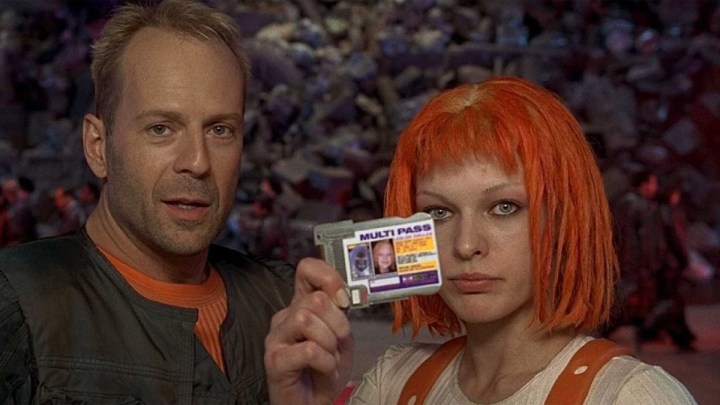
The Fifth Element is camp in its purest and most unadulterated form, a guilty pleasure if ever there was one. Everything about the film is distinct, instantly memorable, intentionally over the top, and completely irresistible. From the costumes to the setup to the gonzo performances of the cast, The Fifth Element is the perfect and intentional marriage between camp and action.
Everyone’s in on the joke. Bruce Willis gives in to his natural comedic instinct to create a straight man who nevertheless plays along with the antics around him. Milla Jovovich — clad in outlandish Jean Paul Gaultier outfits — delivers a suitably charming performance as the film’s almighty being, conveying Leelo’s innocence effortlessly and reflecting the film’s tone in her speech and mannerisms. Gary Oldman does what he does best, delivering a fittingly demented performance that’s not even his campiest of the year. Even the otherwise composed Ian Holm surrenders to the exaggeration as Father Vito Cornelius. However, The Fifth Element‘s camp legend lives and dies with Chris Tucker’s Ruby Rhod.
Whether you see the charcater as a gender nonconformist trailblazer or an offensive walking stereotype, Ruby Rhod is unforgettable. Crass, unapologetic, and shameless, Ruby is a walking, talking exclamation point; the only things louder than his voice are his outfits. Ruby is camp embodied. He is larger-than-life, stealing every scene he’s in, which is no easy feat when the film in question includes one of Hollywood’s best scenery chewers (Oldman) and an opera-singing blue alien diva.
The Fifth Element is one of the best space movies of all time, plain and simple. More colorful than a rainbow, more unsubtle than Joy Behar on The View, and with enough cheese to sustain a Domino’s pizza, the film is a breath of fresh air in a genre usually concerned with weighty themes and complicated world-building. The Fifth Element is bombast come to life, an indulgence that exists to entertain and satisfy, and a celebration of camp as a vital element for action to thrive and even exist.
Cage + Malkovich = mayhem
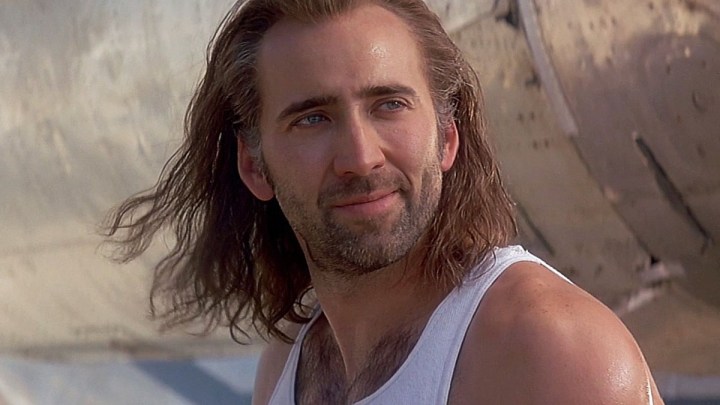
Beyond giving us a slew of timeless Nicolas Cage GIFs, Con Air also gifted us a deliciously maniacal John Malkovich performance, yet another great Steve Buscemi supporting turn, and a cast that includes everyone from Ving Rhames to Danny Trejo. More than any other of the ’97 films, Con Air seems blissfully aware of the type of movie it is, and everyone involved knows it too. The result is a film that poses the question, “How over-the-top can an action film be?” and sets out to answer it, too. Con Air is the Monica Geller of action films, coming up with new questions just so it can respond to them in the loudest, most obnoxious way possible. And we love it for it.
Don’t get us wrong, Con Air is dumb, perhaps the only film in the quartet that seems actively deserving of the qualifier “stupid.” But there’s something admirable in its self-awareness; Con Air knows it’s stupid and proudly boasts about it, sticking its hairy chest out and strolling down Action Avenue with all the pride of a Macy’s Thanksgiving Day Parade balloon. Con Air is spectacularly idiotic. Any film that features this scene is bound to raise some eyebrows, but Con Air does it so shamelessly, so boldly and uncompromisingly that one can’t help but clap, eyebrows still raised but head nodding in agreement as if acknowledging the film’s willingness to be as stupid as possible.
Why does Con Air work? Well, it has Malkovich pointing a gun at a stuffed bunny and saying the line, “Make a move, and the bunny gets it.” with a straight face. The camp in Con Air comes from its very DNA. From choosing Nicolas “Not-the-bees” Cage as the leading man to naming Malkovich’s character Cyrus “the Virus” Grissom, Con Air is looking at camp in the rearview mirror.
The action set pieces, the dialogue, the score! They’re all so gloriously over-the-top that one can’t help but reenact this particular GIF while watching the film. Is it genuine admiration? Secondhand embarrassment? Genuine puzzlement at the antics taking place before our eyes? Who the hell cares! There’s a plane landing on the Las Vegas strip, for Christ’s sake!
Cage (again!) + Travolta = unhinged mayhem, John Woo-style
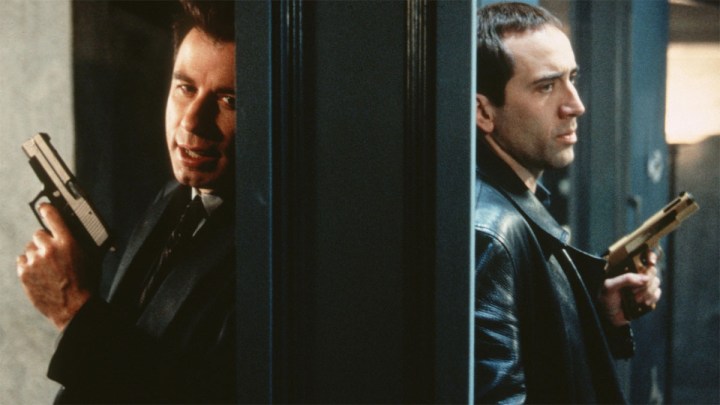
Not content with only one overblown action film, Nicolas Cage returned to conquer the ’97 box office and crown himself the king of camp with Woo’s Face/Off. However, unlike Con Air, there’s a dignity to Face/Off despite, or maybe because of, the contrived yet stylish action around Cage and the equally flamboyant John Travolta.
Face/Off‘s premise tries to pass as sci-fi, but it’s truly just stupid. Even so, the film conveys it with enough confidence to pull it off. It doesn’t have seriousness per se, far from it; however, Face/Off seems convinced of its own grandness, ironically bringing it to life in the process. Unlike Con Air and even The Fifth Element, Face/Off seems under the impression that it is a triumphant achievement in sci-fi; even Cage is considerably more subdued, mainly because he spends most of the film playing the good guy. It has no self-awareness, but it hardly needs it. Stylized and unrestrained, the film finds John Woo at his Hollywood peak, directing elegantly choreographed action scenes that elevate the film above its ludicrous premise.
And yet, Face/Off is campy. The editing choices, the slow-motion during the oddest moments, and the dialogue all qualify it as a camp classic. The action scenes are much more straightforward and less extravagant, but there is a shootout set to Somewhere Over the Rainbow — and that’s more than enough.
The actors do a lot of the camp heavy lifting. Cage might be under control, but Travolta sure isn’t, doing his utmost to deliver a Nicolas Cage performance and coming out victorious. Meanwhile, Cage stutters and weeps his way through dialogue while becoming smaller in his own skin. This exchange alone is enough to launch a thousand think pieces and analyses because it’s a meal of a scene, showcasing two masters of camp at the height of their abilities. Come on, Travolta tries to lick Cage’s face in those two minutes. It might lack Con Air‘s audacity, but Face/Off has enough panache to secure a place in the camp hall of fame.
Oldman unleashed
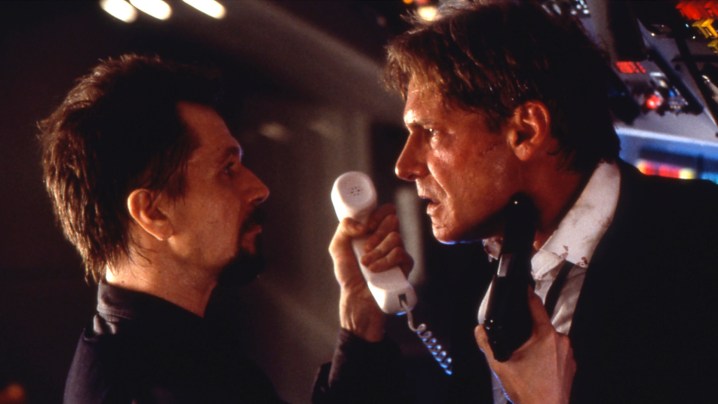
It’s no overstatement to say that Gary Oldman out-Gary Oldman’s himself with his deranged performance in Air Force One. This is the man that delivered the line “Death is whimsical today” and turned it into an iconic piece of film dialogue, and he brings the same frenzied enthusiasm to his Egor Korshunov in Petersen’s classic action flick. Oldman plays — surprise! — the villain, a Russian nationalist and the living embodiment of the Soviet Union.
Oldman’s antics seem more apparent when compared with Harrison Ford, neck-deep in his usual straight-man, action hero persona. Air Force One could be entirely deprived of camp if it weren’t for the fact that Ford plays the President of the United States as an ass-kicking hero capable of taking down a small army of Russian terrorists in a suit and tie. Escapism is one thing, but Air Force One asks audiences to completely shut down their brains and nod in agreement.
But it’s not like Air Force One doesn’t have its fair share of camp. The last sequence, which ends with Xander Berkeley’s Agent Gibbs on his knees loudly sobbing as the plane is about to crash while Ford dangles from a second plane, is ludicrous enough to inspire a chuckle from even the most committed of fans. The shots of Glenn Close’s vice president in the situation room surrounded by several men in uniforms with concerned looks on their faces that offer no help or advice whatsoever are also funny at best and jarring at worst, “thoughts and prayers” come to life.
Still, Air Force One might be the best case for the synergy between camp and action. There’s nothing particularly exaggerated about the plot, despite the premise being so far-fetched, and yet, the film’s action set pieces are nonsensical onomatopoeias brought to life by Harrison Ford in a suit. They want to provoke a reaction from the audience by any means possible, even if it means sacrificing some of the film’s self-declared pride. It can’t help but feel as though Air Force One is ashamed of its camp sensibilities, something many action films share, to their own detriment.
The secret weapon
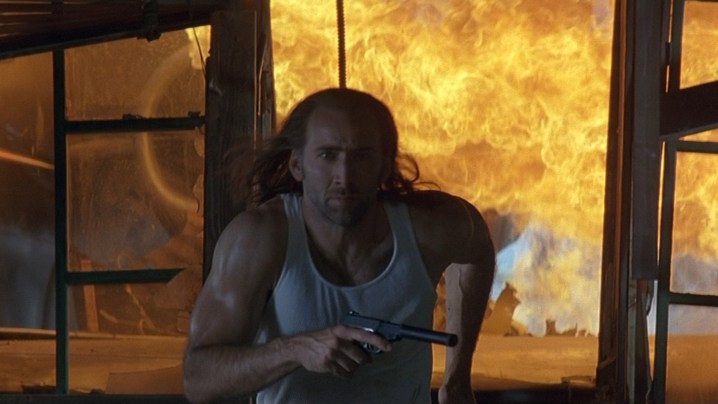
It should come as no secret that camp is an action flick’s secret weapon. The genre needs its thrills, its awe-inspiring, jaw-dropping, mind-bending set pieces. What is it if not a collection of daring sequences that defy the ordinary and surpass expectations? We expect exaggeration. However, the best action films are the ones that embrace this nature instead of rejecting it because they can take pride in what they are. By being in on the joke, they invite audiences to laugh alongside it instead of at it.
Camp shouldn’t be an insult, especially not when it so enriches a genre that could otherwise feel soulless and heartless. Action needs the loud “bangs” and “booms,” and these films can be so much better with a little bit of color and flare. What’s so wrong with that?
The summer of ’97 proved there is a natural synergy between camp and action, and their marriage can result in enduring classics that challenge conventions. More films should learn from this quartet of enthralling and extravagant projects. They might not be to everyone’s taste, and some might consider them loud, dumb, senseless, and deprived of any “value.” However, one thing’s certain: No one can say they are boring. Because in the action genre, there’s nothing worse than being forgettable.



